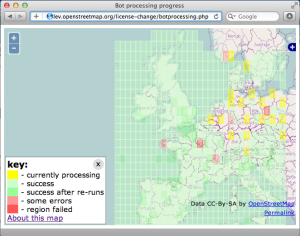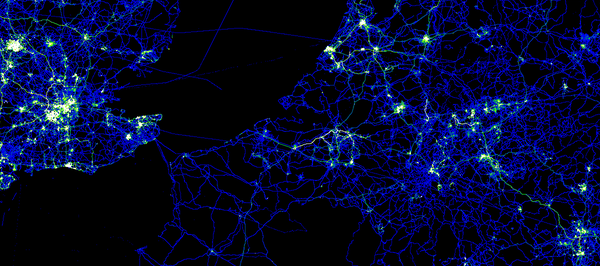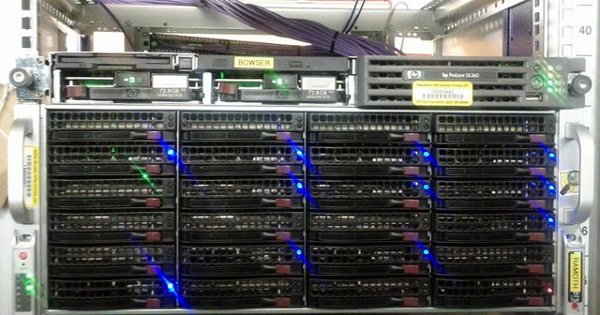In the past week the redaction bot has progressed well. After the intial Ireland test, it has proccessed the UK and is now finishing off the ‘Western Europe’ area. Spain, and Italy are fully proccessed, France is very nearly complete, and the bot is (at time of writing) getting to work on some densely mapped regions such Germany and the Netherlands. You can see its progress on the redaction bot progress map
As you’ll see, the internal checks of the bot and the API occasionally throw up errors which cause a region (1 degree square) not to be fully processed. The developers working on the bot managed to track some of these failures down to specific bugs, meanwhile others are caused by temporary glitches in the API. The bot has been re-run in several areas for this reason.
You’ll also notice many yellow “current” regions being processed. These are parallel instances of the bot processing code. Although we’re not really in a hurry, we have a big dataset to get through. Running in parallel like this is proving to be a little faster.
There is still time to perform remapping ahead of the bot reaching your part of the world, though you may wish to refrain from editing in a region where the bot is actually runnning, to avoid any unnecessary complications. If you’re in a green area there is now a new kind of remapping to do. This is easier and clearer in many ways. Head out and remap those patches where the bot has redacted data.
Remember the license has not changed yet. Even in areas where processing is complete and redactions have been made, the license remains the same until we declare otherwise.
Follow the rebuild mailing list for more details and discussion.




